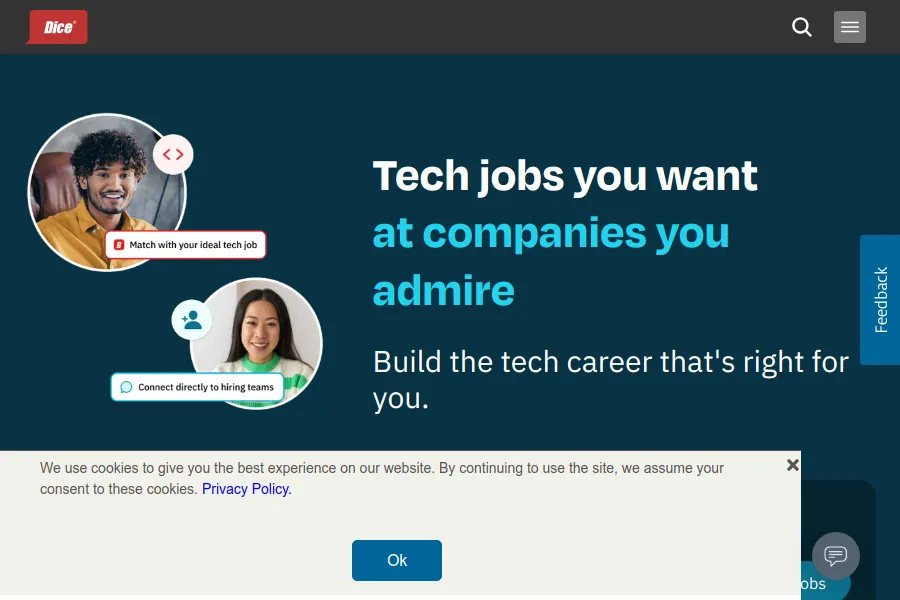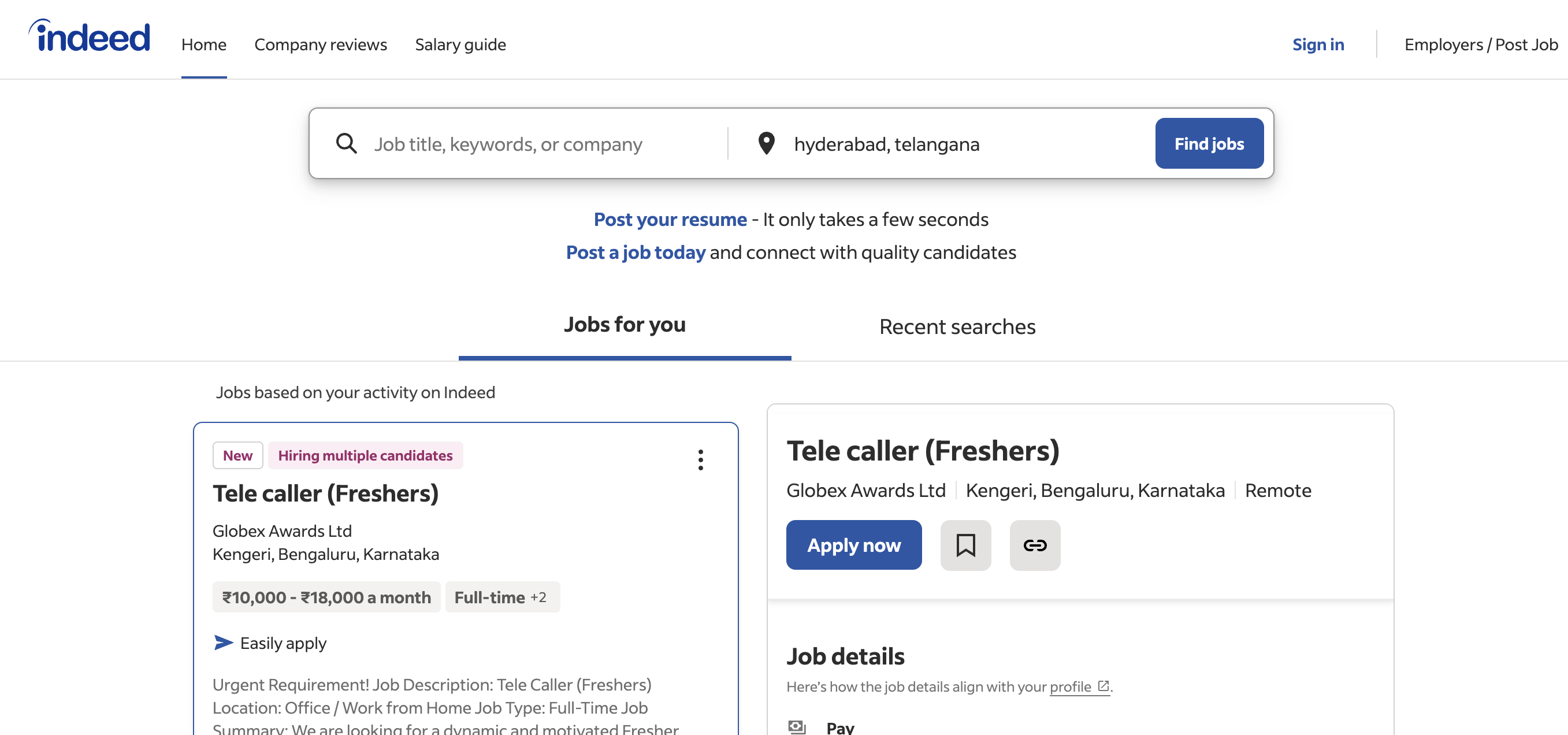Hiring an IT Infrastructure Developer is a critical task for any company looking to maintain, optimize, and secure its IT systems. This role requires not just technical expertise, but also an ability to foresee potential infrastructure needs and challenges. Often, companies struggle with identifying what makes a candidate well-suited for this role, focusing solely on technical skills while overlooking the need for problem-solving abilities and adaptability.
In this article, we break down the hiring process for IT Infrastructure Developers, discussing the skills and qualifications to look for, how to write a compelling job description, and the benefits of using skills tests. We also provide insights on platforms where you can find the best candidates and how to streamline the recruitment process. For more detailed information, you can explore our IT Infrastructure Developer interview questions guide.
Table of contents
Skills and qualifications for an IT Infrastructure Developer
When hiring an IT Infrastructure Developer, it's important to distinguish between must-have skills and nice-to-have qualifications. The role often varies across organizations, so tailor your requirements to your specific needs.
Here are some key skills and qualifications to consider for an IT Infrastructure Developer:
Required:
- Bachelor's degree in Computer Science, IT, or related field
- 3+ years of experience in IT infrastructure development
- Proficiency in network protocols and systems administration
- Strong understanding of cloud computing and virtualization
- Experience with infrastructure as code tools (e.g., Terraform, Ansible)
Preferred:
- Master's degree in a related field
- Experience with DevOps practices and CI/CD pipelines
- Knowledge of containerization (e.g., Docker, Kubernetes)
- Familiarity with IT security best practices
- Proven success in leading cross-functional teams
To accurately assess these skills, consider using IT assessment tests that evaluate candidates' practical knowledge and problem-solving abilities in infrastructure development scenarios.
| Required skills and qualifications | Preferred skills and qualifications |
|---|---|
| Bachelor's degree in Computer Science, Information Technology, or a related field | Master's degree in a related field |
| Three or more years of experience in IT infrastructure development | Experience with DevOps practices and CI/CD pipelines |
| Proficiency in network protocols and systems administration | Knowledge of containerization technologies such as Docker and Kubernetes |
| Strong understanding of cloud computing and virtualization technologies | Familiarity with IT security best practices |
| Experience with infrastructure as code tools such as Terraform or Ansible | Proven success in leading cross-functional teams |
How to write an IT Infrastructure Developer job description?
Once you have a solid candidate profile, the next step is to capture that information in a job description that attracts the right talent. A well-crafted job description sets the tone for your recruitment process.
• Highlight key responsibilities and impact: Clearly outline the specific responsibilities the IT Infrastructure Developer will undertake and their expected contributions to the organization. This helps candidates understand how their role fits into the bigger picture and the impact they will make.
• Balance technical skills with soft skills: While it's important to list technical requirements such as proficiency in cloud services and network management, also emphasize soft skills like teamwork, communication, and adaptability. This balance ensures you attract candidates who can collaborate effectively in dynamic environments.
• Showcase your company’s unique selling points: Describe what makes your company a great place to work, whether it’s innovative projects, a supportive culture, or opportunities for growth. This differentiation can help attract top candidates who are looking for more than just a job.
For a detailed reference, you can find a comprehensive IT Infrastructure Developer job description here.
Top Platforms to Hire IT Infrastructure Developers
Now that you've crafted an engaging job description, it's time to spread the word and attract candidates. Listing your IT Infrastructure Developer role on job boards will help you tap into a pool of talented professionals. Make sure your job postings are clear and concise to quickly catch the attention of potential candidates.
LinkedIn Jobs
Ideal for posting full-time positions and reaching a wide network of professionals. Allows detailed job descriptions and easy application process.

Dice
Specialized job board for tech roles. Excellent for finding candidates with specific IT infrastructure skills and experience.

Indeed
Large job board with a wide reach. Good for posting various types of IT infrastructure positions and attracting a diverse candidate pool.

Beyond the top few platforms, there are several others that cater to different hiring needs. Glassdoor is great for showcasing your company culture alongside your job listing. Platforms like Upwork and Toptal are ideal for finding freelance developers for project-based work. If you're hiring for startups, AngelList offers a network of innovators. For remote or flexible roles, consider FlexJobs. To enhance your hiring process further, explore Adaface's recruitment solutions.
Keywords to Look for in IT Infrastructure Developer Resumes
Resume screening is a time-saving step in the hiring process for IT Infrastructure Developers. It helps you quickly identify candidates with the right skills and experience before moving to interviews.

When manually screening resumes, focus on key technical skills and qualifications. Look for keywords related to networking, cloud computing, and system administration. Pay attention to specific technologies like AWS, Azure, Linux, and Windows Server.
AI-powered tools can streamline the resume screening process. You can use large language models to analyze resumes based on predefined criteria, saving time and reducing bias in initial candidate selection.
Here's a sample prompt for AI-assisted resume screening:
TASK: Screen resumes for IT Infrastructure Developer role
INPUT: Resumes
OUTPUT:
- Email
- Name
- Matching keywords
- Score (out of 10)
- Recommendation
- Shortlist (Yes/No/Maybe)
KEYWORDS:
- Networking (TCP/IP, DNS, Firewall)
- Cloud (AWS, Azure, GCP)
- Systems (Linux, Windows Server)
- Infrastructure as Code (Terraform, Ansible)
- Security (IAM, VPN, SSL/TLS)
Recommended Skills Tests for IT Infrastructure Developers
Skills tests are a great way to evaluate IT Infrastructure Developer candidates beyond their resumes. They provide objective insights into a candidate's technical abilities and problem-solving skills. Here are five key tests we recommend for assessing IT Infrastructure Developers:
System Administration Test: This system administration test evaluates a candidate's ability to manage and maintain IT infrastructure. It covers topics like server management, network configuration, and security protocols.
Cloud Computing Test: As cloud technologies are central to modern IT infrastructure, a cloud computing assessment is essential. It gauges knowledge of cloud platforms, deployment models, and best practices in cloud infrastructure management.
Linux Test: Many IT infrastructures rely on Linux systems. A Linux skills test assesses proficiency in Linux administration, command-line operations, and system configuration.
DevOps Test: DevOps practices are increasingly important in IT infrastructure. A DevOps assessment evaluates skills in continuous integration, deployment automation, and infrastructure as code.
AWS or Azure Test: Depending on your cloud provider preference, an AWS test or Azure test can assess specific cloud platform expertise. These tests cover services, architecture, and best practices for the respective platforms.
Structuring Technical Interviews for IT Infrastructure Developers
After candidates pass the initial skills tests, it's time for technical interviews to assess their hard skills in depth. While skills tests help filter out unqualified applicants, technical interviews are key to identifying the best fit for the role. Let's explore some sample interview questions to use in this stage.
Consider asking: 'Describe a complex infrastructure problem you've solved and your approach.' This reveals problem-solving skills and experience. 'How would you design a scalable and secure cloud infrastructure?' tests cloud knowledge and architecture skills. 'Explain your experience with configuration management tools.' assesses familiarity with essential DevOps practices. 'How would you troubleshoot network connectivity issues?' evaluates networking expertise. 'Describe your experience with containerization and orchestration.' gauges knowledge of modern infrastructure technologies.
What's the difference between an IT Infrastructure Engineer and a Cloud Solutions Architect?
At first glance, IT Infrastructure Engineers and Cloud Solutions Architects may seem similar due to their roles in managing tech environments. However, their focus areas and skill sets are distinct, which often leads to confusion.
An IT Infrastructure Engineer is primarily concerned with on-premises infrastructure. Their work revolves around networking, servers, and storage, using tools like VMware and Active Directory. They typically hold certifications such as CCNA and MCSE. Their approach to scalability is hardware-based, and they focus on perimeter security.
In contrast, a Cloud Solutions Architect focuses on cloud-based solutions, dealing with distributed systems and cloud platforms like AWS and Azure. They use tools like Terraform and Kubernetes and possess certifications in AWS, Azure, or GCP. Their approach emphasizes software-defined scalability and identity-based security. For a deeper understanding of the skills involved, check out the skills required for a cloud architect.
| IT Infrastructure Engineer | Cloud Solutions Architect | |
|---|---|---|
| Focus Area | On-premises infrastructure | Cloud-based solutions |
| Primary Skills | Networking, servers, storage | Cloud platforms, distributed systems |
| Certifications | CCNA, MCSE, CompTIA | AWS, Azure, GCP certifications |
| Tools | VMware, Active Directory, SCCM | Terraform, Kubernetes, Docker |
| Scalability Approach | Hardware-based | Software-defined |
| Security Focus | Perimeter-based | Identity and access management |
| Cost Management | CapEx-oriented | OpEx-oriented |
| Automation Level | Moderate | High |
What are the ranks of IT Infrastructure Developers?
IT Infrastructure Developers often have a career progression that can be confusing to outsiders. The roles and responsibilities may overlap, but there's a clear hierarchy in most organizations.
- Junior IT Infrastructure Developer: This entry-level position focuses on basic infrastructure tasks. They work under close supervision, learning the ropes of system administration, network configuration, and cloud platforms.
- IT Infrastructure Developer: At this mid-level, developers take on more complex projects. They're responsible for designing, implementing, and maintaining IT infrastructure components with minimal supervision.
- Senior IT Infrastructure Developer: These professionals lead projects and mentor junior team members. They're involved in strategic planning and often specialize in advanced areas like cloud computing or DevOps.
- Lead IT Infrastructure Developer: This role combines technical expertise with team leadership. They oversee large-scale infrastructure projects, make high-level architectural decisions, and often interface with other departments.
- IT Infrastructure Architect: At the top of the technical ladder, architects design entire IT ecosystems. They create long-term strategies, ensure systems align with business goals, and stay ahead of emerging technologies.
Streamline Your IT Infrastructure Developer Hiring Process
We've covered the key aspects of hiring IT Infrastructure Developers, from essential skills and qualifications to crafting effective job descriptions and conducting technical interviews. Remember, the goal is to find candidates who can design, implement, and maintain your organization's IT infrastructure.
The most important takeaway is to use well-crafted job descriptions and relevant skills tests to make your hiring process more accurate. By focusing on these elements, you'll be better equipped to identify and attract top IT Infrastructure talent for your team.
Linux System Administrator Online Test
FAQs
An IT Infrastructure Developer is responsible for designing, implementing, and managing the infrastructure of a company's IT systems, ensuring they are secure, scalable, and efficient.
Look for candidates with strong knowledge in network design, system administration, cloud computing, virtualization, and an ability to troubleshoot complex issues.
Clearly outline the responsibilities, required skills, and qualifications. Highlight the importance of problem-solving abilities and adaptability. You can refer to our job description template for more guidance.
Consider using specialized job boards like LinkedIn, Indeed, and Glassdoor, as well as platforms focused on tech talent such as GitHub and Stack Overflow.
Skills tests help objectively assess a candidate's technical abilities, ensuring they meet the job requirements. They are especially useful in evaluating problem-solving skills and real-world application of knowledge.
Structure interviews to assess both technical and soft skills. Include scenario-based questions and practical tests that require candidates to solve real-world infrastructure problems. For more details, refer to our interview questions guide.
While both roles focus on IT systems, a Cloud Solutions Architect specializes in designing and managing cloud-based systems, whereas an IT Infrastructure Developer works on a broader spectrum of IT infrastructure, which may include both on-premise and cloud solutions.

40 min skill tests.
No trick questions.
Accurate shortlisting.
We make it easy for you to find the best candidates in your pipeline with a 40 min skills test.
Try for freeRelated posts
Free resources



